John Kitz, who recently received the 2023 Conservation Farmer of the Year award from the Westmoreland Conservation District, is now the first farmer in the county to receive funding from the Agriculture Conservation Assistance Program, or ACAP. Conservation improvements on John Kitz’s Mount Pleasant farm include fencing along streambanks, a stabilized cattle crossing, streambank stabilization, a water trough, stabilized animal heavy use area, subsurface drainage, a livestock watering ramp, subdivision fencing, and a riparian buffer with approximately 385 trees and shrubs. Approximately 2,400 feet of stream was improved.
ACAP was created through the Clean Streams Fund to reduce nonpoint source pollution in Pennsylvania’s waterways. It provides funding and technical assistance for the implementation of best management practices on agricultural lands. Funding for the program is provided through local conservation districts. If you have questions about the ACAP program in Westmoreland County, contact Chelsea Gross, Non-point Source Manager.
A stabilized animal heavy use area (AHUA) was installed to improve an animal concentration area (ACA) which was discharging nutrients and sediment directly to the stream.
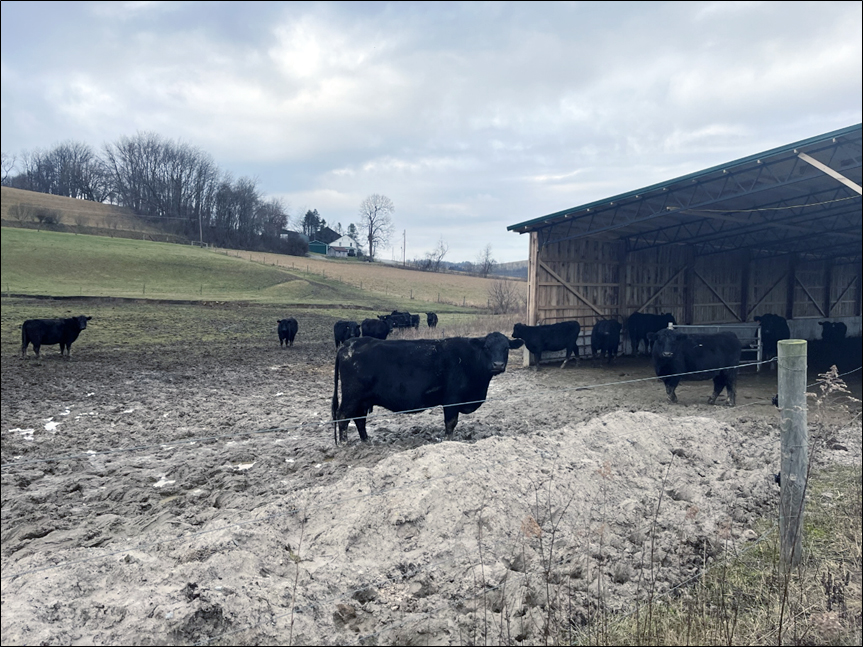
Before: Muddy animal concentration area with runoff leading directly to the stream.

After: Stabilized animal heavy use area, watering trough, and stream crossing installed.
This project consisted of installing streambank fencing along 2,400 feet of stream and planting approximately 385 trees/shrubs to create a riparian forest buffer.
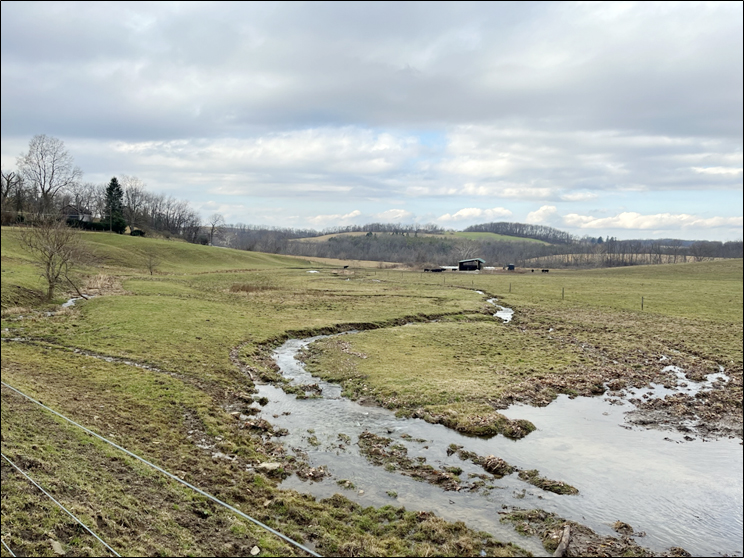
Before: Cattle having unlimited access to the stream.
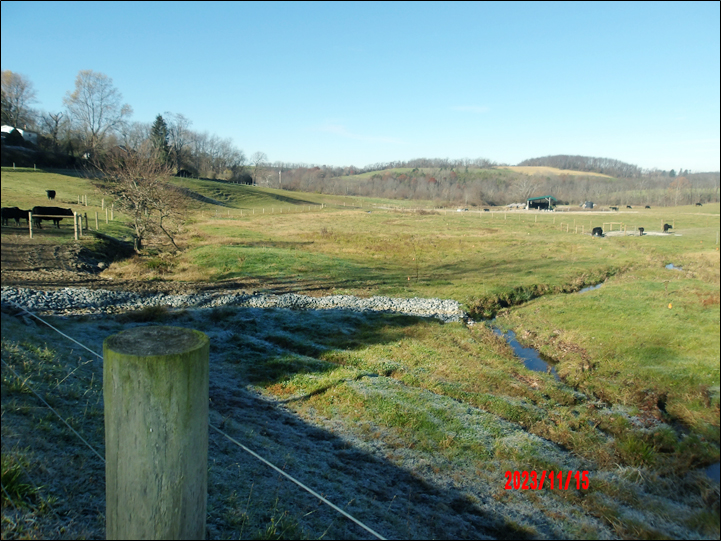
After: Cattle are now fenced out and a riparian forest buffer was installed.
The stabilized stream crossing was installed for cattle to access additional paddocks and as supplemental water access.
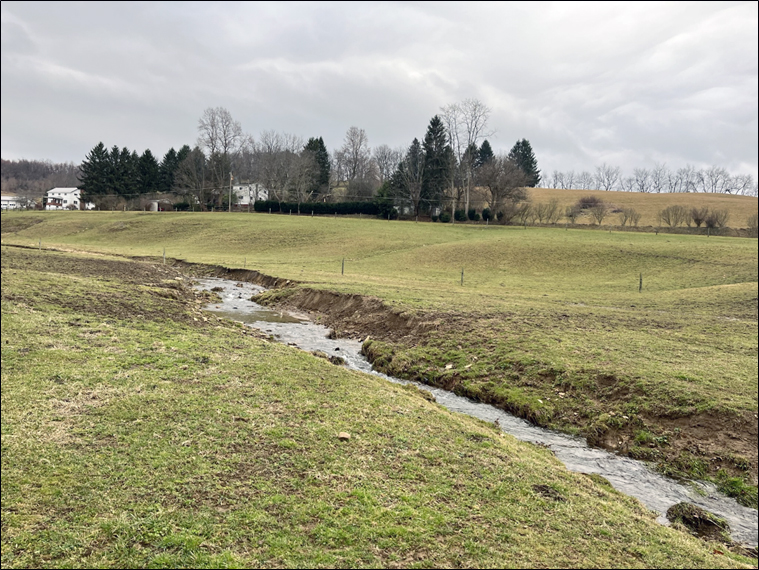
Before: Where the cattle primarily crossed the stream and was eroding the banks away.
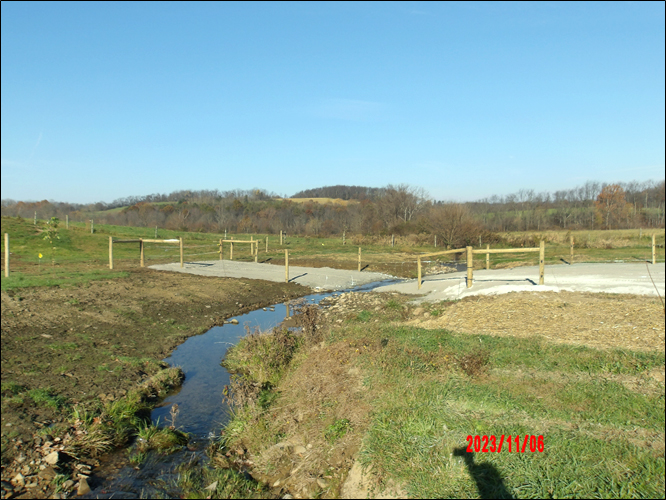
After: A stabilized stream crossing installed at the Kitz farm that allows cattle to cross and get drinking water.
In the additional paddock, a livestock access watering ramp was installed to provide a drinking source for the cattle and to limit their access to the stream.
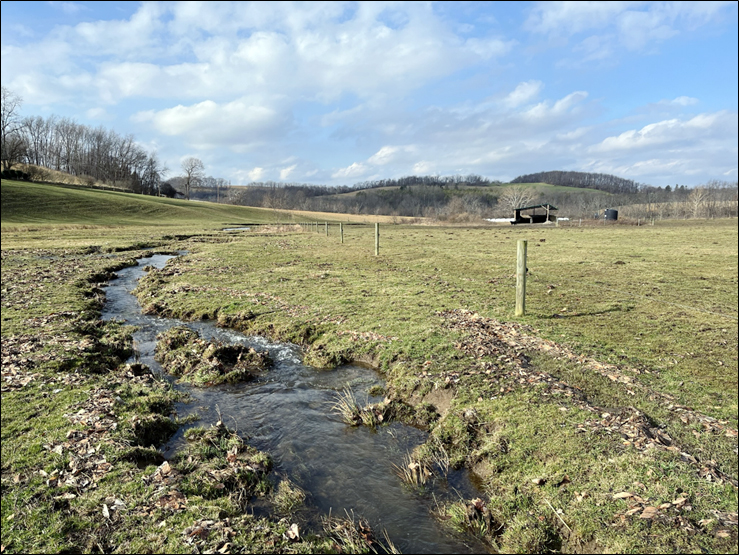
Before: Fence posts were close to the stream with no buffer to help filter nutrients before entering the stream
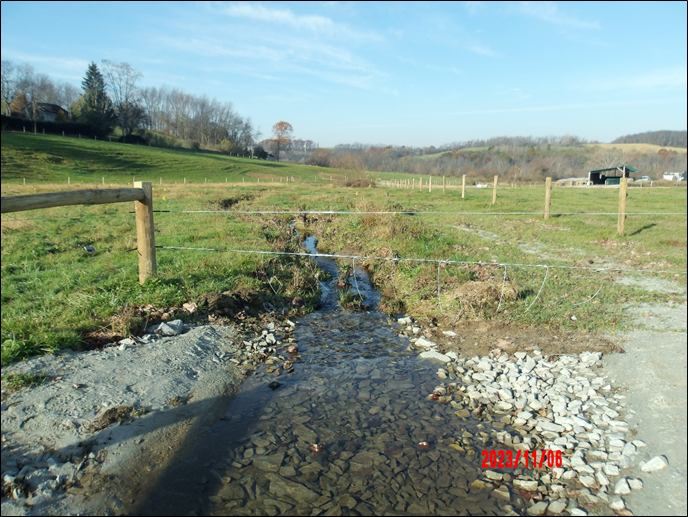
After: Fence posts were moved further away to create a wider riparian forest buffer with a livestock access watering ramp.
